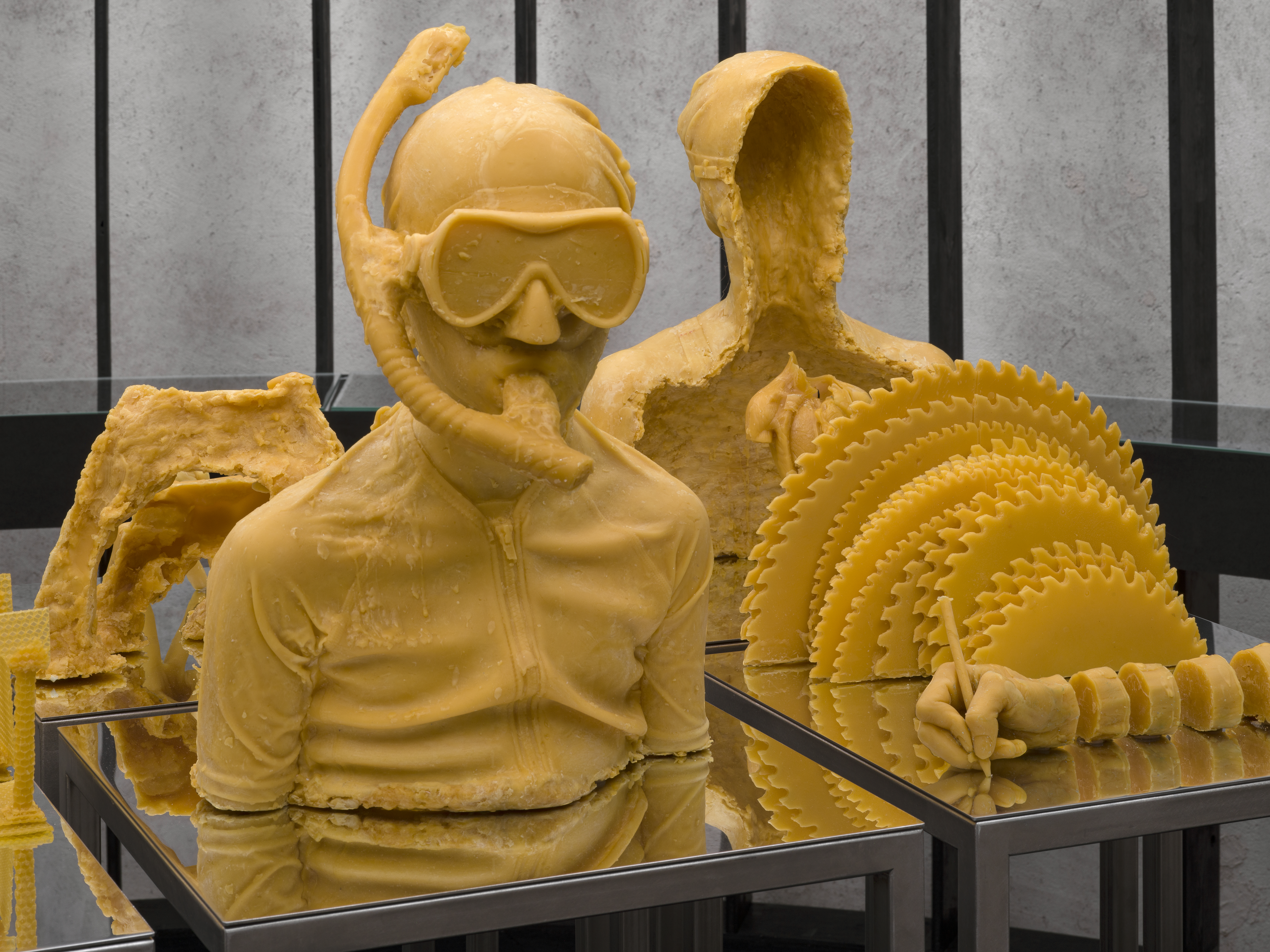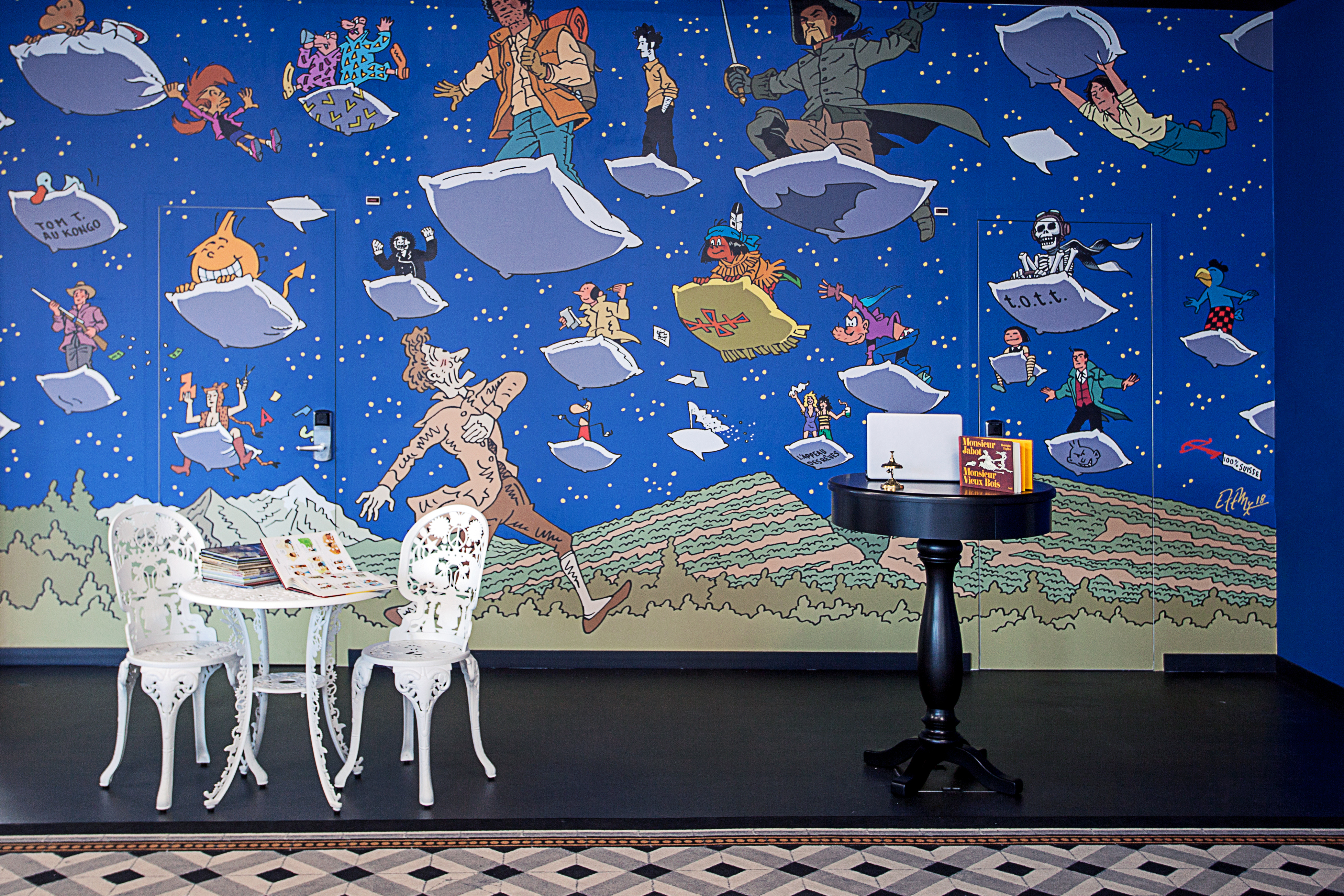
Villa Rose opens doors to Toblerone ramblers

For years the mysterious pink family house on the former Geneva-to-Lausanne main road puzzled locals – never any lights in the windows or cars on the drive.
Last weekend all was revealed when the Villa Rose, a secret fortress built in 1940, threw open its heavy reinforced doors to the public as one of the highlights of Switzerland’s European Heritage Days.
The fortress, located south of Gland in canton Vaud, is the best preserved – and certainly one of the most unusual – of the 12 forts on the so-called “Toblerone Trail”.
This is the name given to a line of concrete anti-tank defences running from the Jura mountains to Lake Geneva and built by the Swiss to slow any possible invasion by the Nazis during the Second World War.
Several thousand curious visitors queued up to discover the villa’s secrets. The building has been restored to its former condition thanks to former veterans and is soon to be listed as a national monument.
There are more than 100 similar “false chalets” in Switzerland, but the Villa Rose is the best-preserved example from the period now open to the public.
The work has been largely down to Gérald Beruto, president of the Toblerone Trail Association, and his colleagues, who got the project off the ground in 1995.
“We are all surprised by the public’s interest this weekend. We never expected such a positive reaction,” Beruto told swissinfo.
“But for me it’s more than just military history; people are looking for their roots and want to pass on something to their children.”
False
With its tranquil setting and deceptive exterior, the villa would certainly have fooled advancing forces.
Its false windows, traditional green shutters and 2.5-metre-thick walls hide an arsenal of large anti-tank canons and other weaponry. The villa’s mission was to defend nearby bridges, an electricity plant and, especially, the main Geneva-to-Bern road against an assault from the west.
Throughout the war, up to 30 men were holed up in the villa, some for weeks on end, with next to no contact with the outside world. Fearful of an invasion by the Germans, they occasionally heard gunfire and saw villages burning in nearby France.
The basement living quarters recreate the atmosphere of the 1940s, with examples of weapons, equipment, cutlery, documents and other items.
Toblerone
The preservation project was initially intended to conserve an important part of local military heritage.
It has since snowballed, gaining much local attention, especially from the local tourist office, and now has greater focus on its place in the natural environment.
The 2,700 nine-ton concrete toblerones form a ten-kilometre line from Bassins in the Jura mountains to the Geneva lakeside near Prangins.
The path running alongside the human-sized blocks is a ramblers’ paradise, winding its way down from meadows through a succession of natural beauty spots via woods, vineyards and residential areas – and even crossing a golf course.
Covered in moss, ivy and other vegetation, the concrete monuments to history have almost become part of the countryside.
Art
It is not surprising that people are starting to look at the blocks from a completely different angle – even describing the linear garden as modern sculpture.
“As the blocks are slowly hidden by nature, they have less historical and greater visual importance,” commented Beruto.
Instead of simply being an opportunity for the public to revisit local military history, the European Heritage Days was also an invitation to discover the region.
“Following the trail you are in contact with history, of course, but also with nature and the economy – agriculture, wine-making and forestry,” added Beruto.
Last year the Swiss tourism board awarded the Toblerone Trail its “Swiss Pure” label, which highlights unique examples of environmental tourism.
swissinfo, Simon Bradley on the Toblerone Trail
Before and during the Second World War, Switzerland’s main goal was to preserve its independence and to stay out of the fighting.
To face the threat of invasion Switzerland increased the training of recruits and built defence works. Reserves were called up to guard the border with Germany.
The population were told to stockpile food, and given instructions about how to prepare for air raids. Every available piece of land was dug up for planting crops to ensure food supplies.
In summer 1940 German military staff started drawing up invasion plans for Switzerland known as operation Tannenbaum.
The Nazis aimed to destroy the Swiss army and invade the central part of Switzerland, which was important for strategic and economic reasons. The plan was never carried out.
The idea for European Heritage Days came after France held an open day for historical monuments in 1984.
In 1991 the idea was adopted by the Council of Europe. It is aimed at celebrating the diversity and unity of Europe’s cultural heritage.
Nowadays 34 European countries take part, attracting around 20 million visitors to around 30,000 monuments and sites. Switzerland has been taking part since 1993.
The European Heritage Days took place in Switzerland on September 9-10. The theme this year was gardens. 230 gardens and sites were open to the public.

In compliance with the JTI standards
More: SWI swissinfo.ch certified by the Journalism Trust Initiative





























You can find an overview of ongoing debates with our journalists here . Please join us!
If you want to start a conversation about a topic raised in this article or want to report factual errors, email us at english@swissinfo.ch.